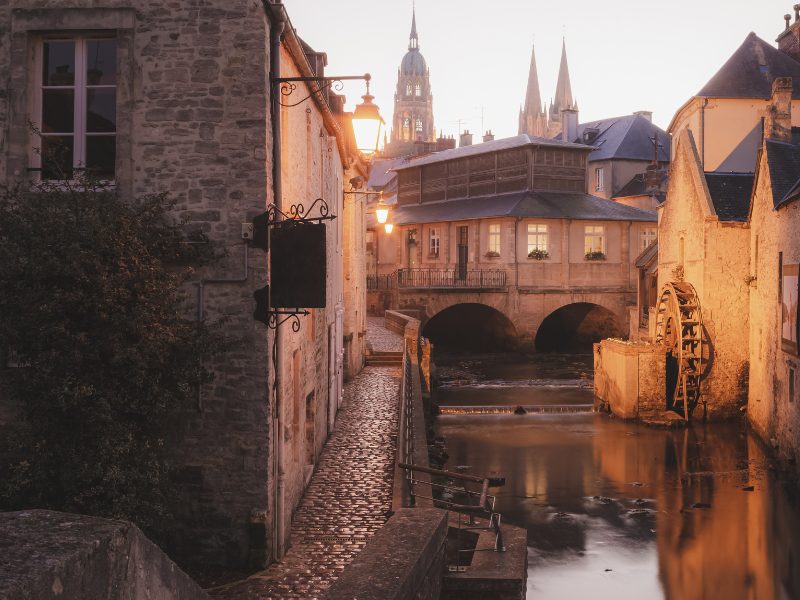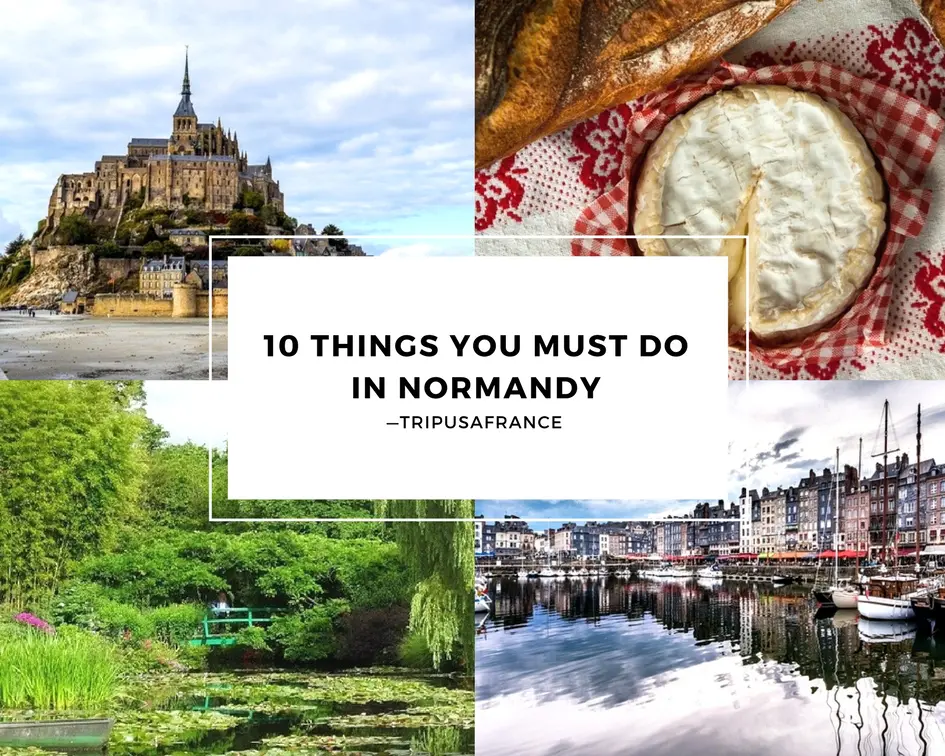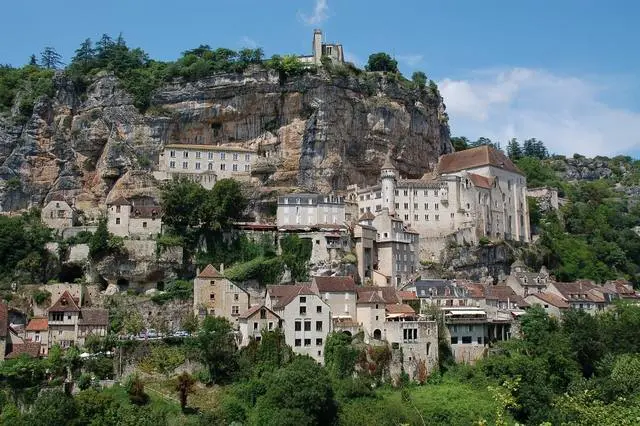Normandy Map & Guide – Must-See Places, Food, and Travel Tips
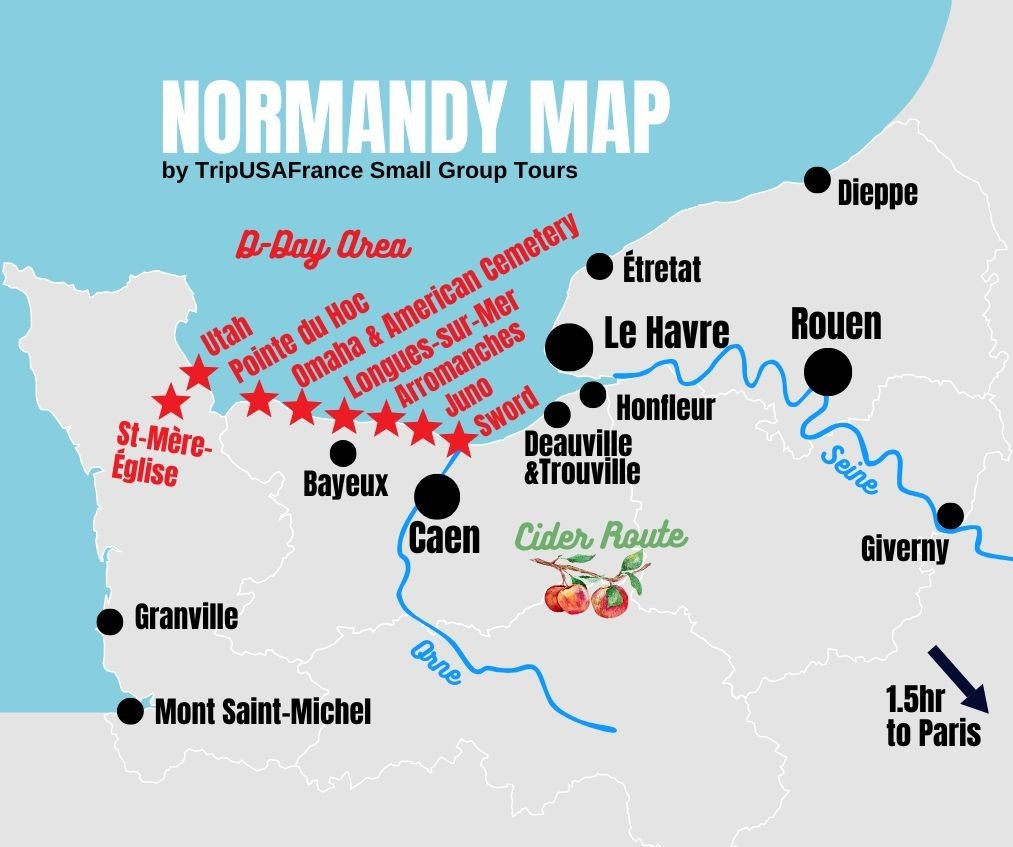
Introduction to Normandy
Located in northwest France, Normandy is a land of striking contrasts. Rugged Atlantic coastlines blend with lush green countryside and bright colors of Impressionist paintings meet the dark memories of World War II. Just a few hours from Paris, Normandy is home to Rouen, the capital city where culinary icon Julia Child fell in love with French cuisine, Mont-Saint-Michel, the famous abbey that rises from the sea, and the poignant American Cemetery of Normandy, where thousands of soldiers rest in tribute to the sacrifices of World War II.
Normandy’s name, derived from “Northman Land,” is a testament to its Viking roots and deep historical influence on France and Europe. Over the centuries, the region has witnessed William the Conqueror’s rise, the trial of Joan of Arc, and the pivotal D-Day landings of World War II. Beyond its historical significance, Normandy is a food lover’s paradise, boasting creamy Camembert cheese, crisp apple cider and rich Calvados or fresh seafood from its coastal waters.
With dramatic white cliffs, charming harbor towns, and rolling pastures dotted with half-timbered farms, Normandy is as picturesque as it is historic.
To make exploring easier, we’ve put together a comprehensive map of Normandy showcasing its most captivating towns, historic and cultural landmarks. This guide will walk you through everything you need to know, from the ideal time to visit to transportation options and top attractions.
Normandy Map
This Normandy map highlights the region’s top destinations, including historic sites and charming towns. Use it to plan your itinerary and make the most of your visit.

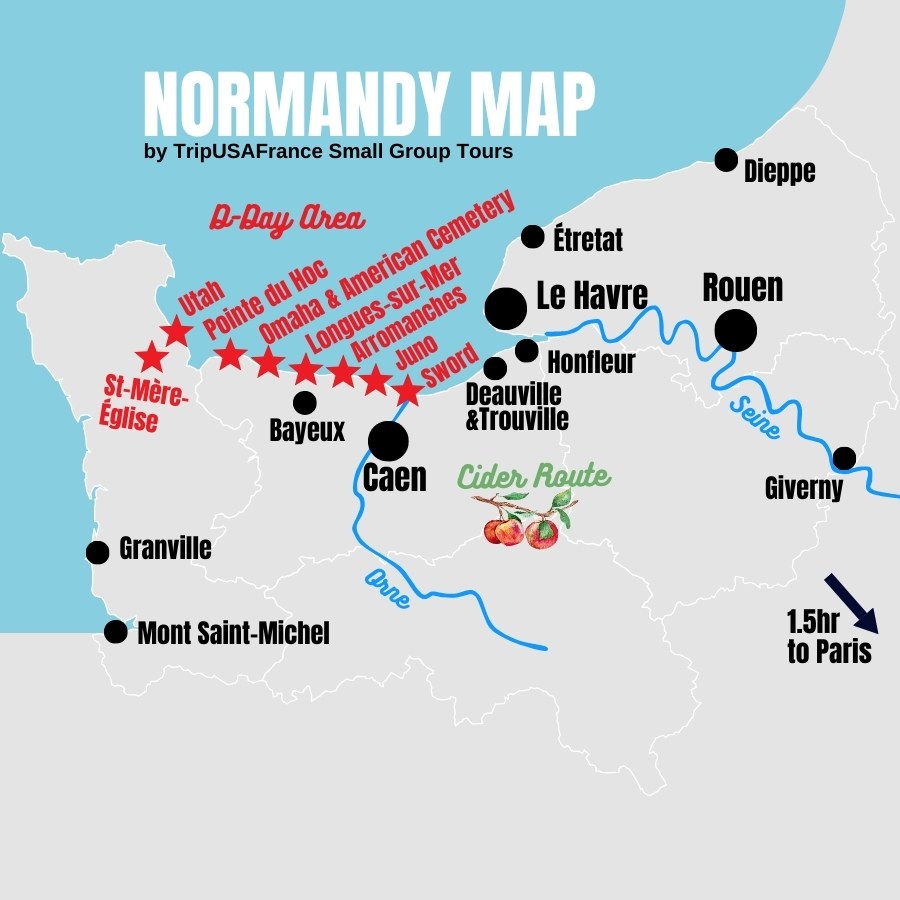
Must-See Places in Normandy
D-Day Landing Beaches & WWII Memorials
- The American Cemetery of Normandy – A solemn and moving tribute to the thousands of U.S. soldiers who sacrificed their lives during the D-Day invasion, overlooking Omaha Beach.
- Omaha Beach – One of the most famous landing sites of D-Day, with a moving memorial and the nearby American Cemetery.
- Utah Beach – Another key landing site, featuring a museum detailing the events of June 6, 1944.
- Pointe du Hoc – A dramatic cliffside battlefield where U.S. Army Rangers scaled the heights under heavy fire.
- Longues-sur-Mer Battery – A well-preserved coastal artillery battery with four large German guns, offering a glimpse into the defensive strategy of the Atlantic Wall.
- Arromanches-les-Bains – Home to the remains of the artificial Mulberry Harbor used during the landings.
- Sainte-Mère-Église & The Airborne Museum – One of the first towns liberated on D-Day! St-Mère-Église features a museum dedicated to the paratroopers who landed there. The town’s church is famous for the paratrooper John Steele, whose parachute got caught on its steeple, a moment depicted in the classic war film The Longest Day.
- Caen Memorial Museum – One of France’s best WWII museums, providing deep insights into the Battle of Normandy. A full-day visit is recommended, making it an ideal stop for those spending more time in the region.
- Other Historical Sites & Museums – Normandy is filled with numerous WWI museums and historical sites. But also bridges, towns and locations where pivotal WWII operations took place. While we cannot list them all, each location holds a unique place in the region’s rich wartime history.


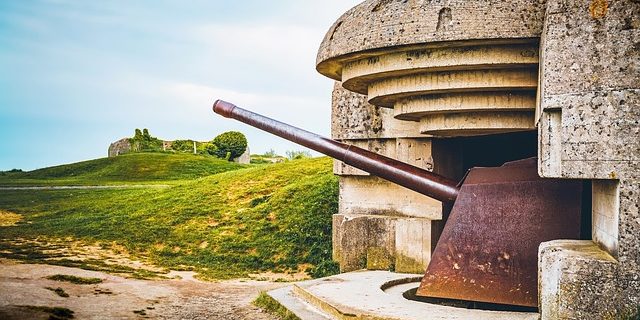


Iconic Landmarks
- Mont-Saint-Michel – A UNESCO-listed medieval marvel with winding streets, stunning views, and a historic abbey perched atop a rocky island.
- Rouen – A fascinating medieval city known for its timber-framed houses, the magnificent Rouen Cathedral—immortalized in a series of paintings by Claude Monet—and its deep Viking history, as the city was founded by Rollon the Viking, the first ruler of Normandy. Rouen is also where Julia Child experienced French cuisine for the first time. The city is famously tied to Joan of Arc, where she was tried and executed in 1431. Rouen also played a crucial role during World War II, suffering extensive bombings but maintaining its historic charm.
- Bayeux – Home to the Bayeux Tapestry, which depicts the Norman conquest of England in 1066. The museum is closed for renovations until 2027—check the official website before visiting. Bayeux is a charming town with well-preserved medieval architecture. Its central location makes it an excellent home base for exploring the region, offering a variety of restaurants, hotels, and easy access to key sites in Normandy.
- Honfleur –A quintessential Norman small town that captivated many Impressionist painters, Honfleur is known for its charming harbor, cobbled streets, and colorful buildings. Its historic downtown features the remarkable Saint Catherine’s Church, France’s largest wooden church, built by shipbuilders.
- Caen –Founded by William the Conqueror, Caen is home to the Château de Caen, one of Europe’s largest medieval fortresses, and Abbaye aux Hommes, his final resting place. Heavily bombed in WWII, the city was rebuilt and now boasts museums, markets, and a vibrant cultural scene.
- Beuvron-en-Auge – small village known for its half-timbered houses, quiet streets, and local artisan shops. Listed as one of the “Most Beautiful Villages of France“.



Coastal & Countryside
- Giverny – The house and gardens remain a stunning tribute to Impressionism, featuring a picturesque pond, a charming Japanese bridge, and vibrant flower beds that change with the seasons, making it a must-visit for nature and art lovers.
- Étretat Cliffs – Striking white limestone cliffs that have captivated visitors and artists for centuries.
- Deauville & Trouville – Elegant seaside resorts with sandy beaches and Belle Époque charm villas.
- Granville – Picturesque coastal town with a lively fishing port. It’s home to the Christian Dior Museum, set in the designer’s childhood home, and serves as the gateway to the Chausey Islands, a beautiful archipelago perfect for a day trip.
- The Seine Valley – A stunning route following the river past lush landscapes and historic villages.
- The Cider Route – A scenic trail through the Pays d’Auge, a region known for its apple orchards and cider production. Stretching about 25 miles (40 km), the route winds through picturesque countryside, with opportunities to stop at traditional farms to sample Normandy’s finest ciders and Calvados while learning about the local craft.



Taste of Normandy: Food & Drinks
- Normandy Cheeses – Normandy is famous for its cheeses, and while the creamy Camembert is the most well-known, the region is also home to three more exceptional varieties. Livarot, known for its strong aroma and deep flavor, Pont-l’Évêque, a smooth and creamy cheese with a mild taste, and Neufchâtel, a heart-shaped cheese with a rich, slightly salty flavor.
- Normandy Cider & Calvados – Normandy is known for its apple-based drinks. Visit traditional cider farms and Calvados distilleries to sample local specialties and learn about the region’s apple-growing heritage.
- Fresh Seafood – Normandy’s coastline provides an abundance of fresh oysters, mussels, scallops, and other seafood delicacies, best enjoyed in local markets and seaside restaurants.
- Crêpes & Galettes – While traditionally associated with Brittany, Normandy also serves delicious crêpes and savory buckwheat galettes, often paired with local cider.
- Apple Pie & Tarte Tatin – Normandy produces an abundance of apples, inspiring a variety of delicious desserts. Try the classic tarte tatin, an upside-down caramelized apple tart, or a traditional Normandy apple pie.
- La Teurgoule – A slow-cooked rice pudding flavored with cinnamon, a comforting and traditional Normandy dessert.
- Les Caramels d’Isigny – Rich, buttery caramels made from the high-quality milk and cream of Isigny, a sweet specialty of the region.
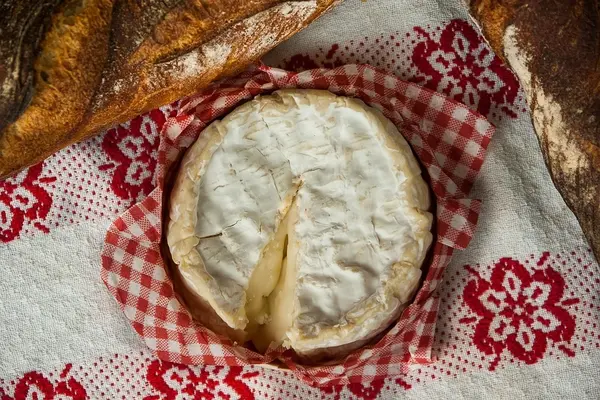


How to Get Around
The best way to explore Normandy is by car, allowing you to visit multiple sites at your own pace. Scenic driving routes connect major attractions.
- Renting a car: Normandy is approximately 2-3 hours from Paris, making it an easy addition to a France itinerary. The best way to explore Normandy is by car, allowing you to visit multiple sites at your own pace and access more remote villages and scenic countryside harder to reach by public transport. You could rent a car at Charles de Gaulle Airport (CDG) or any major towns like Rouen, Caen, or Bayeux. While most French people drive manual cars, rental agencies now offer plenty of automatic options for travelers.
- Trains & Public Transport: There are regular trains from Paris to Rouen, Caen, and Bayeux, with buses available to smaller towns.
- Joining a Group tour: For a hassle-free experience, consider joining a small group Normandy tour. Your tour leader will share their knowledge and experience, bringing the history and culture of each site to life. The insights are especially valuable when exploring WWII history, adding depth and perspective to each location. With no need for driving or planning, you can relax and enjoy the journey while gaining access to places and details you might have missed on your own.
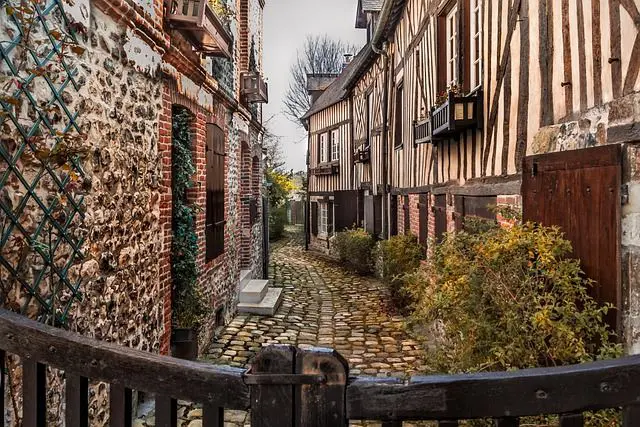


Best Time to Visit Normandy
- Spring (April–June) – Cool and fresh with blooming landscapes. Expect mild temperatures and some rainy days. A great time to visit for fewer crowds and vibrant nature.
- Summer (July–August) Recommended! – Comfortable temperatures with long daylight hours. Ideal for beach visits, outdoor activities, and festivals. Warm but rarely too hot, with the least amount of rainfall. Not as crowded as expected, as many locals travel to the south of France or abroad during this time.
- Autumn (September–October) – Mild temperatures with crisp air and stunning fall colors. A fantastic season for food lovers, with cider and harvest festivals.
- Winter (November–March) – Chilly and wet, but a peaceful time to visit. Charming Christmas markets, though some attractions may have limited hours.
FAQs to Help You Plan Your Trip to Normandy
- Is Normandy rainy? Normandy has a temperate maritime climate, meaning rain is possible year-round. Spring and autumn tend to be wetter, while summer sees the least rainfall. It’s always a good idea to pack a rain jacket, as occasional rain showers are common.
- Is Normandy a large region? Yes, Normandy is a sizable region in northern France (approximately 11,600 square miles). While not massive, its diverse landscapes, from beaches to rolling countryside, make it feel expansive.
- Is English widely spoken? In major tourist areas like Bayeux, Rouen, and Mont-Saint-Michel, many locals speak some English. However, in smaller towns and rural areas, French is predominant. Learning a few basic phrases can be helpful.
- Do I need to rent a car? Renting a car is the best way to explore Normandy. It allows you to go at your own pace and access more remote sites. If you don’t feel comfortable driving, joining a small group tour is a great way to explore Normandy.
- Are there any local events worth attending? Yes! The D-Day commemorations in June feature reenactments and ceremonies honoring WWII veterans. The Fête de la Coquille et de la Pêche in Honfleur celebrates Normandy’s seafood heritage, and cider festivals take place in the fall.
- Are there wineries in Normandy? Normandy is known for its apple-based drinks rather than wine. Instead of vineyards, you’ll find cider farms and Calvados distilleries producing some of France’s finest apple brandy.
Ready to Discover the Best of Normandy?
Use our Normandy map and detailed guide to help craft the perfect itinerary and make the most of your visit. From historic battlefields to breathtaking coastal cliffs, charming villages, and world-class cuisine, Normandy offers a journey like no other.
Next Read: What is Normandy famous for?
